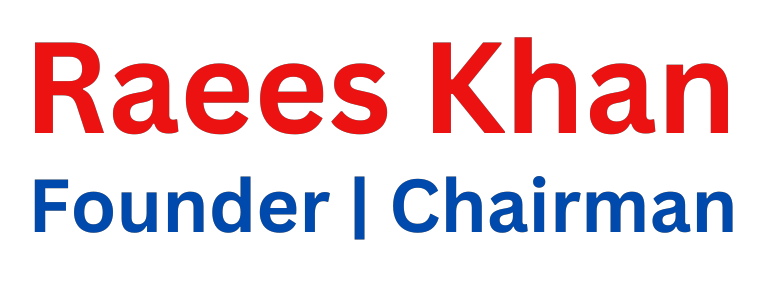Picking Validators, Hardware Wallets, and Staking ATOM: My Take on the Cosmos Experience
Okay, so here’s the thing — when I first dove into the Cosmos ecosystem, I was kinda overwhelmed. Validators, staking, inter-blockchain communication (IBC)… it felt like trying to pick the right team in a fantasy league without knowing the players. But, slowly, I started piecing together why validator selection and hardware wallet integration aren’t just technical details; they’re game-changers for anyone serious about securing their ATOM and earning decent rewards.
Wow! Seriously, the stakes are pretty high when you’re locking up your tokens. One wrong move and your rewards tank, or worse, you get slashed. That part bugs me a lot, honestly. My instinct said I needed a wallet that balances security with ease of use — no clunky nonsense.
Initially, I thought all wallets were basically the same, but then I stumbled upon the keplr wallet and that changed everything. It’s got this sleek interface but also supports hardware wallets, which was a huge plus for me. I mean, who wants their crypto keys just floating around on a browser extension? Not me.
Something felt off about some validators too — the ones that claimed super high returns but didn’t have transparency or a good track record. On one hand, higher APR sounds tempting. Though actually, after digging deeper, I realized that validator reputation and uptime matter way more in the long run.
Here’s a little secret: staking ATOM isn’t just about locking tokens. It’s about trust and community participation. You’re not just a bystander; you’re part of the network’s heartbeat. And picking a validator is kinda like choosing your neighborhood watch captain — you want someone reliable, honest, and responsive.
By the way, speaking of hardware wallets, integrating them with Cosmos networks was once a hassle. But keplr wallet made it surprisingly smooth. I hooked up my Ledger device without breaking a sweat. Plus, the way it handles IBC transfers between chains? Pretty slick. That cross-chain magic is exactly why Cosmos stands out.
Here’s what bugs me about some staking platforms: they hide complexities under flashy UIs. You don’t really know what’s going on behind the scenes until it’s too late — slashing events, validator downtime, or governance votes you missed. With keplr, I get a clearer picture, and that transparency calms my nerves.
Check this out—

Seeing validator stats in real-time gave me that ‘aha’ moment. I could compare uptime, commission rates, and even community feedback. It’s like having insider info without needing to be a blockchain expert.
Validator Selection: More Than Just Numbers
Picking a validator isn’t just a numbers game. Sure, commission fees and APRs matter, but I learned to look beyond that. Some validators reinvest in the ecosystem — sponsoring meetups, contributing code, or actively engaging in governance. That’s a big plus for me.
Honestly, I used to ignore governance stuff, thinking it was for hardcore devs only. But turns out, validators’ voting behavior can affect the network’s future. So if your validator supports proposals that align with your values, that’s a win.
Also, decentralization is key. I try to avoid validators who hold huge chunks of staked ATOM just because centralization defeats the purpose of Cosmos. I’m biased, but I favor smaller, community-driven validators. They might offer slightly lower returns, but the network health benefits everyone.
Oh, and here’s a funny thing — sometimes I’d pick a validator just because their name sounded cool or their website was user-friendly. Silly, I know. But hey, human nature, right?
Anyway, the keplr wallet interface makes switching validators pretty painless, compared to some other wallets I’ve tried. And that flexibility matters because sometimes you gotta move your stake if a validator starts slacking off.
Hardware Wallets: The Missing Piece for Serious Stakers
I’ll be honest — I was skeptical about hardware wallets at first. They seemed like overkill for a hobbyist like me. But after hearing stories about hacks and phishing, I started thinking differently.
Hardware wallets keep your private keys offline, which is a huge security upgrade. The keplr wallet’s support for Ledger and other hardware devices felt like the perfect marriage — convenience meets security. Plus, I didn’t have to juggle multiple apps or deal with complicated setups.
Something I wasn’t expecting: the peace of mind. Knowing that even if my computer got compromised, my keys remained safe? Priceless.
Still, the setup took a bit longer than I hoped. (Oh, and by the way, if you’re not super tech-savvy, give yourself some extra time — no shame in that.) But once I got it going, managing my ATOM staking and IBC transfers through the keplr wallet was smooth sailing.
Staking ATOM: The Rewards and Risks Dance
Staking ATOM is almost like planting a tree. You put in some effort upfront, wait patiently, and hope it grows. But unlike a tree, the crypto landscape changes fast. Validators can get penalized, networks can upgrade, and governance proposals can impact rewards.
Initially, I thought I could just stake and forget. Nah, that’s a rookie move. I keep tabs on my validators’ performance and community news. Sometimes I even hop on Cosmos forums or Discord to catch whispers early.
Really, staking is a commitment. The lockup periods and unbonding times mean you can’t just pull out instantly. So you better trust your validator.
Speaking of which, the keplr wallet’s easy-to-navigate dashboard helps me monitor everything — from staking rewards to token balances across chains connected via IBC. I’m not 100% sure I’ve explored all its features, but it keeps getting better with updates.
One last thing — be cautious about validators promising sky-high returns. Many times, it’s a red flag. Sustainable, modest yields backed by solid validator behavior beat flashy numbers any day.
Okay, so check this out — if you want to get hands-on with staking ATOM, managing validators, and securing your keys with hardware wallets, the keplr wallet is a solid place to start. For me, it struck the right balance between user-friendly and powerful.
Honestly, I’m still learning and tweaking my setup. Crypto’s a wild frontier, and no one has all the answers. But having the right tools and a trustworthy validator makes all the difference.
So yeah, if you’re part of the Cosmos ecosystem and want to get serious about your staking game, don’t just settle for the first validator or wallet you find. Take your time, do your homework, and lean on communities. And remember, even pros mess up sometimes — it’s part of the ride.




